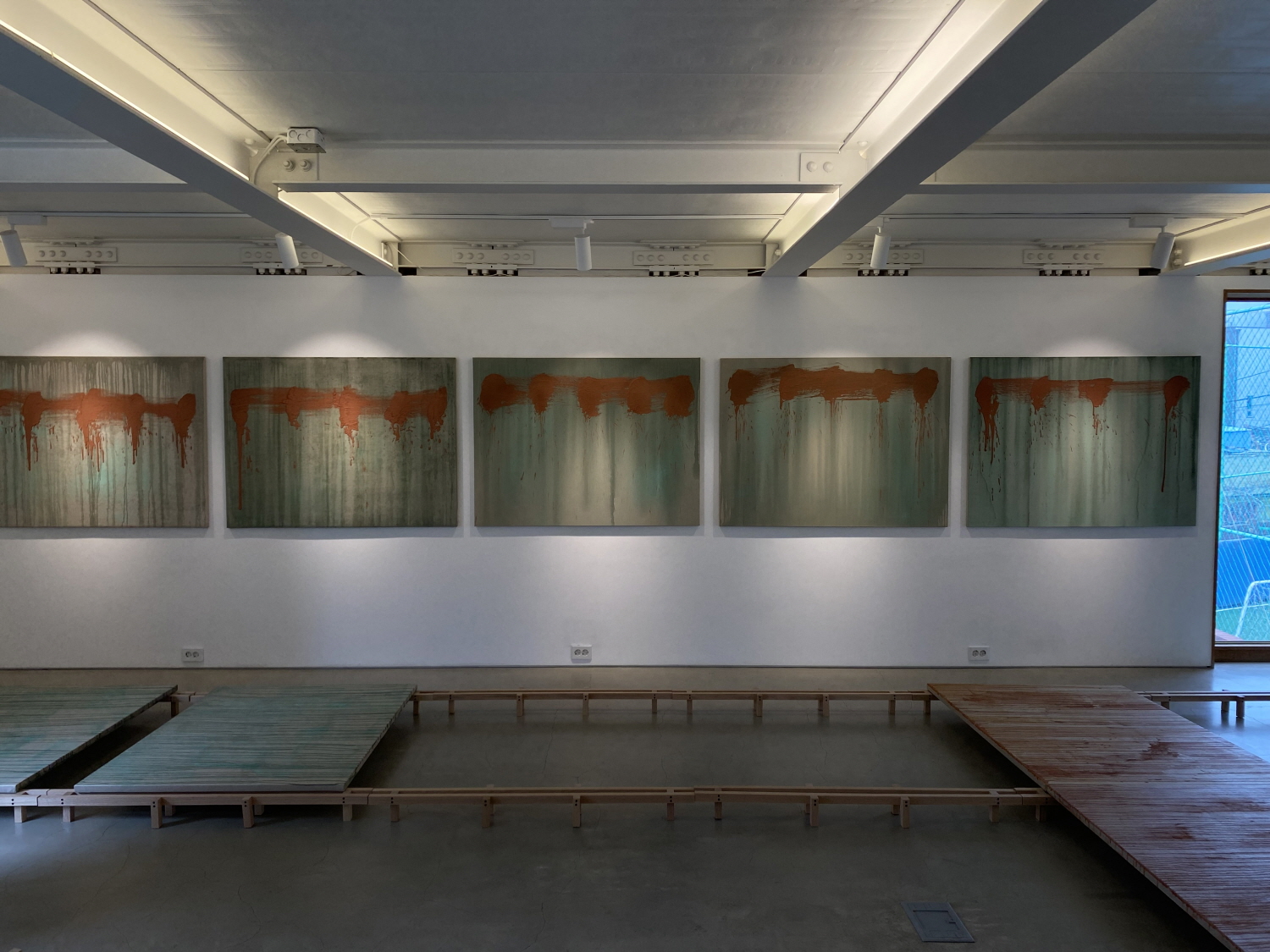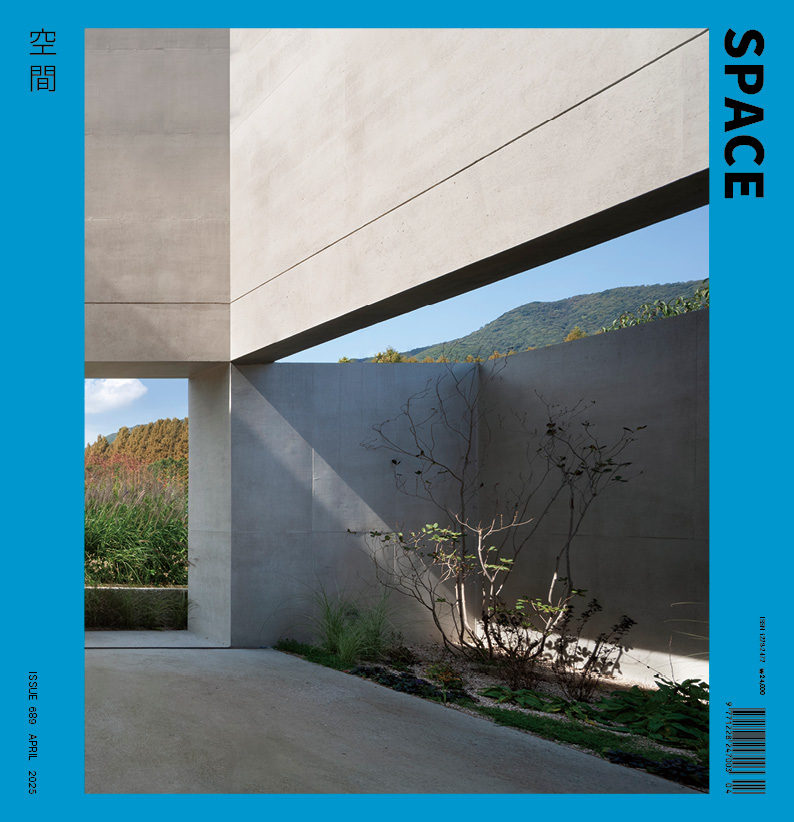SPACE April 2025 (No. 689)

Cho Byoungsoo holding a maksa-bal in his studio

View of Cho Byoungsoo’s studio and a forest painting
Cho Byoungsoo (principal, BCHO Partners) was selected as the first invited Korean architect to ‘MoscaPartners Variations 2025’ at the Cortile d’Onore, Palazzo Litta operated by the Italian Ministry of Culture. Since 2014, MoscaPartners has commissioned an architect to design a site-specific installation during Milan Design Week. The theme of this exhibition, which runs from Apr. 6 – 13, is ‘Migrations’. In response to this theme, Cho Byoungsoo reinterpreted the keyword as cultural migration and exchange, and suggested the idea of ‘earth, forest, mahk’, a relationship between humans and nature. For him, the earth has been a rich source of his artistic inspiration. He believes that the earth is not something that is created at a particular moment, but something that eternally exists. A common good, earth can provide forests, poems and countless narratives that can be shared and enjoyed by everyone, but never be belongs to anyone.
In this exhibition, by emphasising an experience of earth, he differentiates himself from previous contributing architects who focused on volumetric structures. To successfully deliver its delicate sense of earth, at the centre of the courtyard, he decided to install a rectangular platform, elevated about 30cm from the ground level and covered with red soil such as volcanic ash and crushed stone. Visitors can step onto the platform, walk on the soil and feel an affiliation with the earth.
His paintings, depicting ‘forest’ will be horizontally presented along the series of columns. This placement, allowing ink to flow and curve along the texture of the canvas, is sophisticated and intended to express an unexpected forest formed by sprouts from the soil. Korean traditional material, dancheong including nerok (blue-green pigment), seokrok (stone green), seokganju (red ochre) and stone or earth powder, have been used in these paintings. The connected paintings remind visitors of a forest.
A series of paintings, Mahk, is his own reinterpretation of maksa-bal (the Korean rustic bowl), a bowl reflecting Korean aesthetics. Using a thick brush, he applies a sufficient amount of earth powder and paint and plays with varying pressures, spinning and pushing matter. In the end, he ceased this action and left his energy on the paper. According to him, this finale can be understood as a potter’s handprint on a maksa-bal. In total, about 30 works of maksa-bal will be also exhibited. These maksa-bal pieces, reinterpreted through casting rather than traditional methods, highlight the misalignments of the seams that form during the casting. As result, the surface of these bowls looks like they are in motion. His intention is not merely to bring the meaning and function of Mahk, but to create a new form using new material, techniques and formal expression.
Cho Byoungsoo confessed that in his uncertain youth, he painted to explore and express his inner world. Now, however, through painting, he assembles his scattered thoughts and ideas to create a more unified world. His works, bridging architecture and art, do not provide individual explanations on earth, forest and mahk, but rather are organically connected with single context, ‘earth’. Though we all live on this planet, perhaps, at the same time, our souls may have drifted far away from it. By presenting the various works mentioned above, Cho Byoungsoo tries to reconnect humans with the earth.





